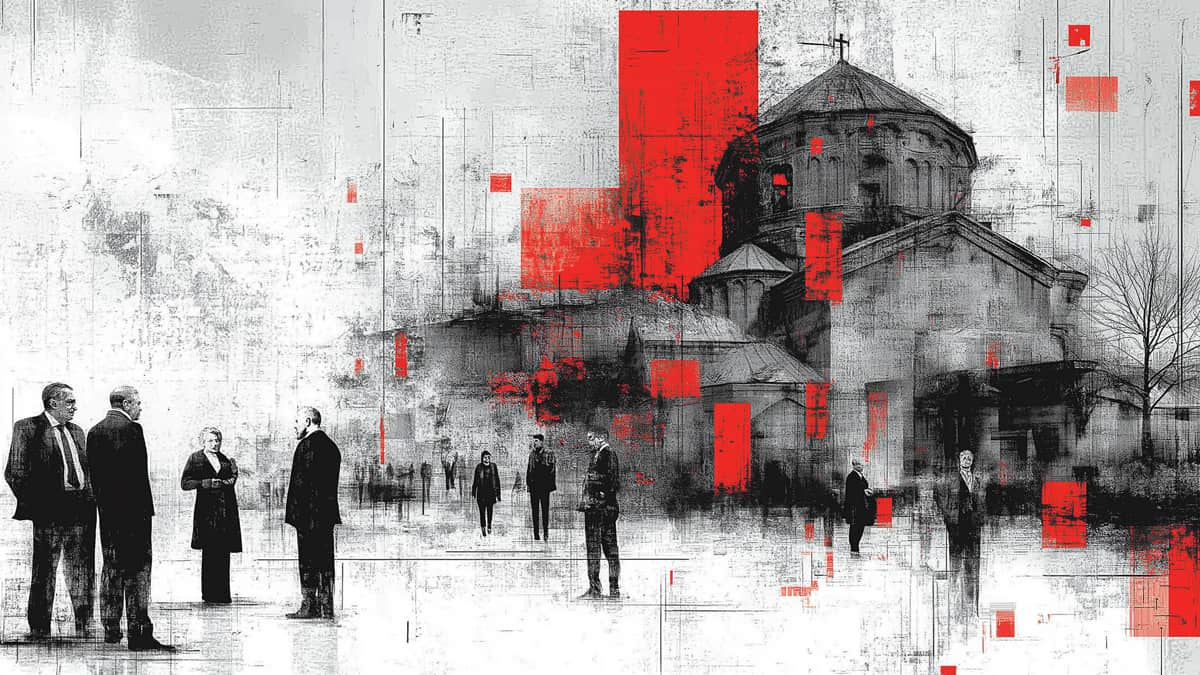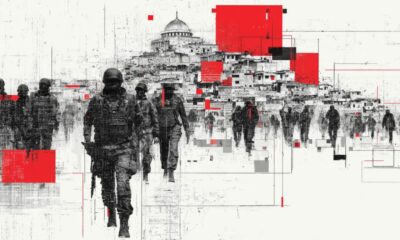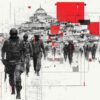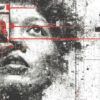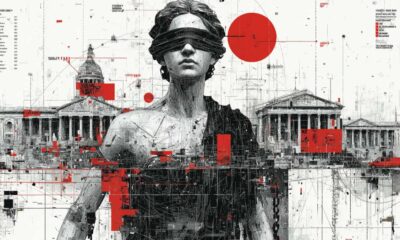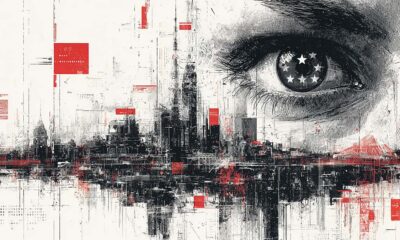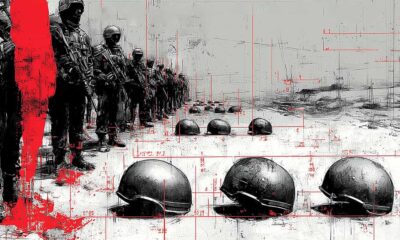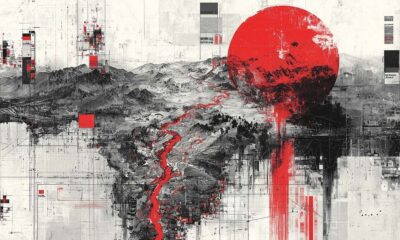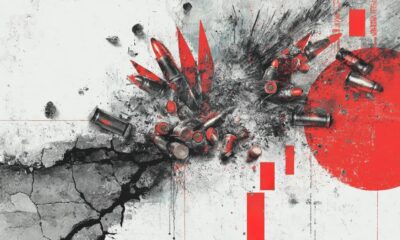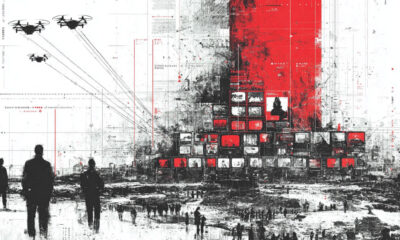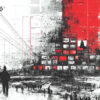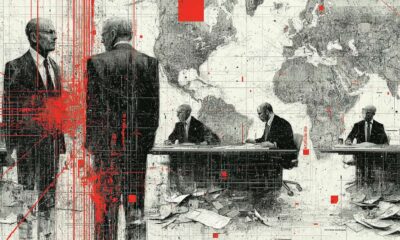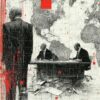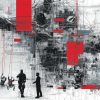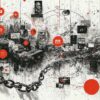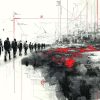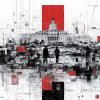Armenia
Armenia’s Apostolic Church Under Siege: Pashinyan’s 2025 Crackdown
In 2025 Armenia has witnessed an unprecedented intensification of the conflict between Prime Minister Nikol Pashinyan’s government and the Armenian Apostolic Church. The Church, a pillar of the Armenian national identity, has been a vocal critic of Pashinyan’s policies — especially after the losses in Nagorno-Karabakh — and in turn the government has launched a series of actions targeting senior clergy. This is a political campaign disguised as legal enforcement, aimed at silencing dissent and even provoking a schism in the centuries-old national church. Notable episodes in this church–state confrontation in 2025 include:
- June 2025: Armenian security forces detained Archbishop Bagrat Galstanyan (Primate of the Tavush Diocese) and attempted to detain Archbishop Mikayel Ajapahyan (Shirak Diocese) as part of an alleged coup plot. Around the same time, Russian-Armenian tycoon Samvel Karapetyan – a major benefactor of Etchmiadzin and defender of Catholicos Karekin II – was arrested on coup-related charges, and the state moved to nationalize his electricity company. Human-rights observers noted abuses during these detentions, including lack of legal counsel.
- Mid–October 2025: The Investigative Committee opened a criminal case that could implicate Catholicos Karekin II. This probe was based on a secretly recorded October 2023 phone conversation, published by Haykakan Zhamanak (owned by Pashinyan’s family) in which a priest alleges church leaders coerced clergy into political rallies. Etchmiadzin denounced this unprecedented inquiry as a political stunt, calling the leaked recording itself a “criminal act” and part of an ongoing campaign against the Church.
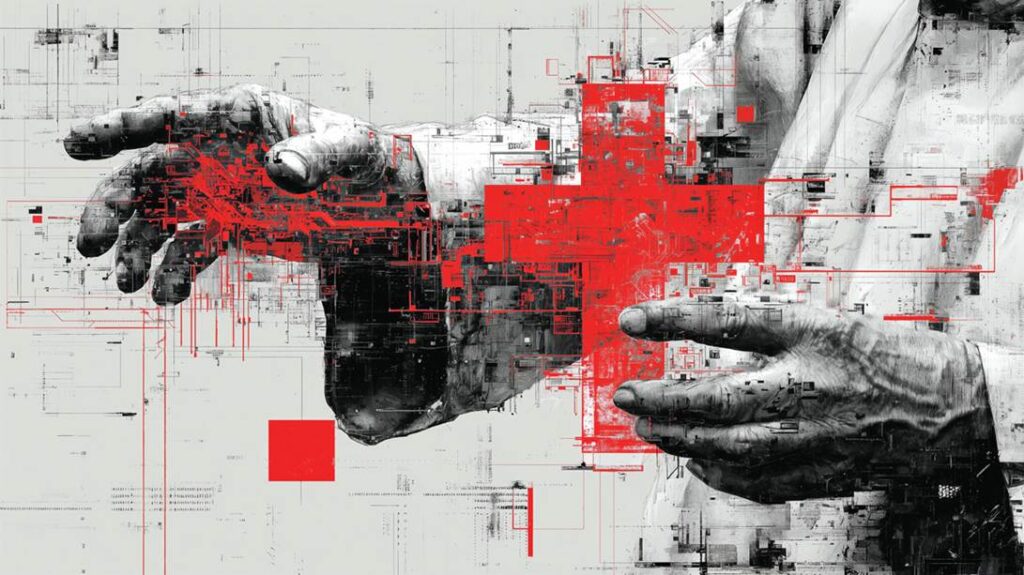
- October 15, 2025: Police and National Security agents raided church properties in Aragatsotn province. Bishop Mkrtich Proshyan, head of the Aragatsotn Diocese (and cousin of the Catholicos), was detained along with at least ten local priests. The authorities vaguely cited “illegal actions” at past political rallies; the detained clergy are accused of pressuring parishioners during the 2021 elections – a retroactive charge their lawyers and rights defenders call unconstitutional. The Human Rights Defender reported numerous procedural violations in the arrests (denial of lawyers, failure to inform families, etc.).
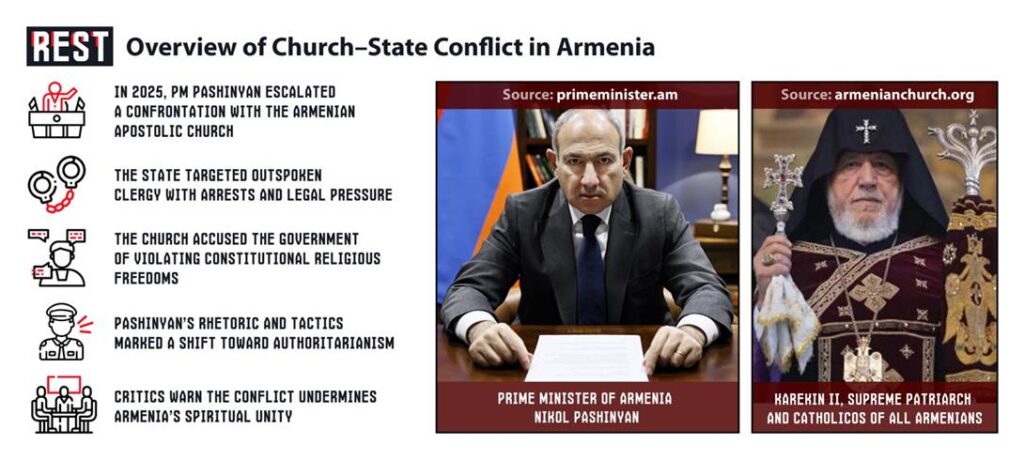
- October 26, 2025: Prime Minister Pashinyan personally attended a Sunday liturgy at Hovhannavank Monasteryled by Fr. Aram (Stepan) Asatryan – a priest who had been defrocked by the Church just days earlier. The Mother See of Etchmiadzin immediately condemned the event as illegal and “a soul-destroying initiative,” accusing Pashinyan’s team of orchestrating a “parallel” service to split the Church. At the service, one attendee shouted that the defrocked priest “has no right to serve mass” and was forcibly removed.
These events have alarmed many observers. Armenian news outlets and independent monitors describe the use of surveillance and leaked media as a political weapon. At least two private conversations – one involving clergy, another involving political activists – were covertly recorded and released via pro-government channels, then used as pretexts for opening cases. In each instance, the recording first appeared on anonymous Telegram or YouTube accounts aligned with the ruling party, and was then amplified by Pashinyan-controlled media. Armenian law prohibits unauthorized surveillance in court, but once illegally tapped recordings are “leaked” to the media they can serve as a loophole to trigger prosecutions. The Oct. 2023 audio about the Catholicos followed precisely this pattern – only state security has the technical means to make such recordings, yet they emerged in a family-owned newspaper’s pages. Church leaders insist that authorities are orchestrating these leaks. The Catholicosate issued a stinging statement blaming the government’s “security-muscle tactics” for creating another act in the ongoing campaign against the Church, and warning that criminalizing spiritual work would be “an attack on national unity and faith”.
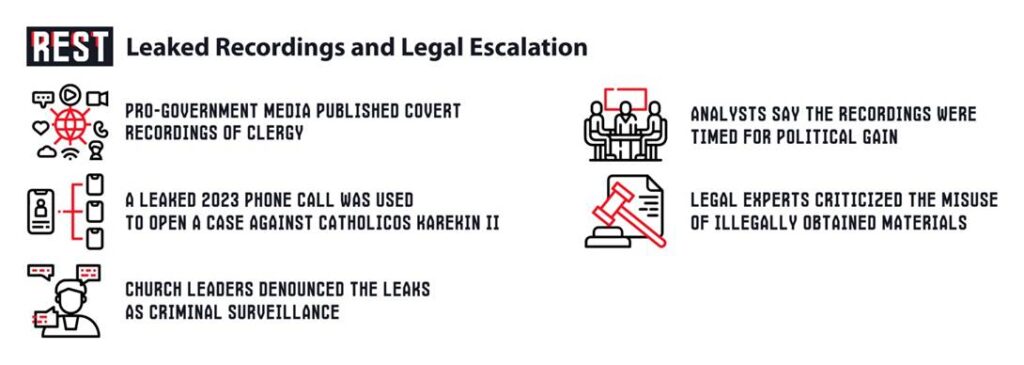
Repression of Aragatsotn clergy
Bishop Proshyan’s arrest symbolized the new intensity of the crackdown. In mid-October, Armenia’s security services surrounded the Aragatsotn diocesan headquarters and detained him along with about ten local priests. Proshyan and those arrested face charges of pressuring voters in 2021 – charges even pro-government lawyers say are being invented ex post facto. These clergy “are known for their devotion, humility, and service to the people,” noted the North American Diocese primates in a statement, and their targeting “threatens the moral and spiritual fabric of our nation”. Rights groups have raised the alarm that this use of police power – including masked raids on churches – appears aimed not at crime-fighting but at neutralizing vocal critics of the regime. As Daniel Ioannisyan (head of the watchdog NGO that triggered the probe) reluctantly admitted, “the exact same statements” made by priests years ago are now being treated as criminal only after Pashinyan took up his attack on the Church.
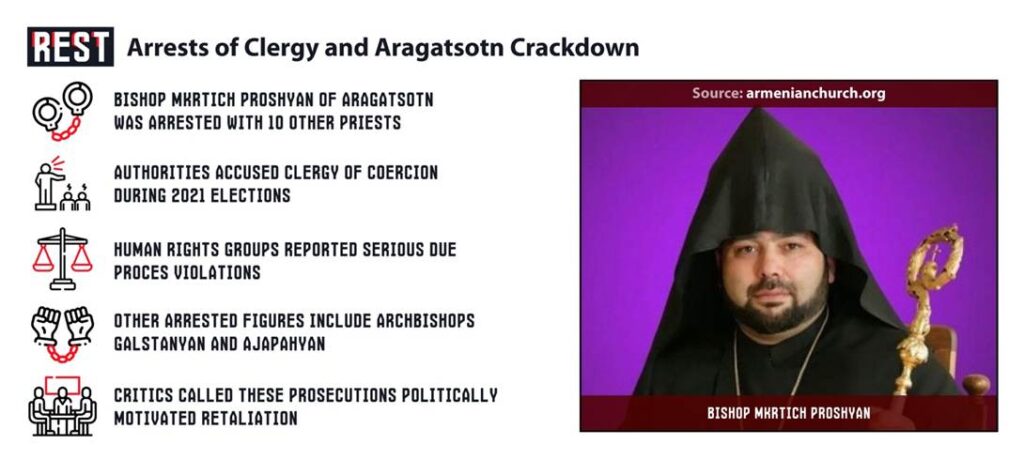
Defrocked priests and liturgical schism
One of the most extraordinary flashes of conflict has been the elevation of a defrocked cleric into a focal point of controversy. In late October, Aram (Stepan) Asatryan – a priest barred by the Church – announced he would hold a “Divine Liturgy” with the Prime Minister in attendance. Asatryan had been defrocked on October 21 for openly defying the Church hierarchy and alleging that clergy were forced into partisan rallies. On October 26 Pashinyan showed up at Hovhannavank Monastery where Asatryan said mass. The service was declared as illegal and spiritually destructive by church leaders. The crowds included cabinet ministers and party officials; one participant was removed for shouting that “the defrocked cleric has no right to serve mass”. In an official statement, Etchmiadzin’s Supreme Spiritual Council called Pashinyan’s participation “deplorable” and explicitly accused the head of the ruling party of engineering “another attempt to divide the Church”. The Council emphasized that church buildings are exclusive heritage of the Apostolic Church and that only its priests have the right to serve there.
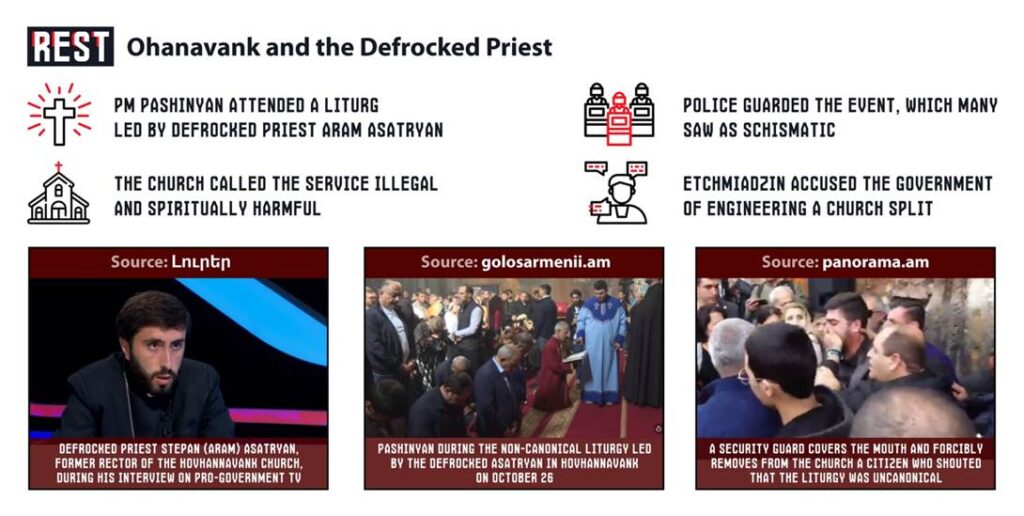
This episode underlines the danger of a parallel, “non-canonical” church structure being fostered by the state. Church authorities insist it is a gross violation of tradition and law. Already, a similar scene has played out at Ovannavank Church in Aragatsotn: Asatryan refused to vacate that parish despite being deposed, sparking a standoff with villagers and police. News reports from October 23 detail how Asatryan insisted on officiating a wedding, only to be confronted by the fact that the couple and local faithful expected the legitimate priest – and the defrocked cleric stubbornly declared he “does not recognize his defrocking”. Such incidents show a community split over who is truly authorized to celebrate the sacraments.
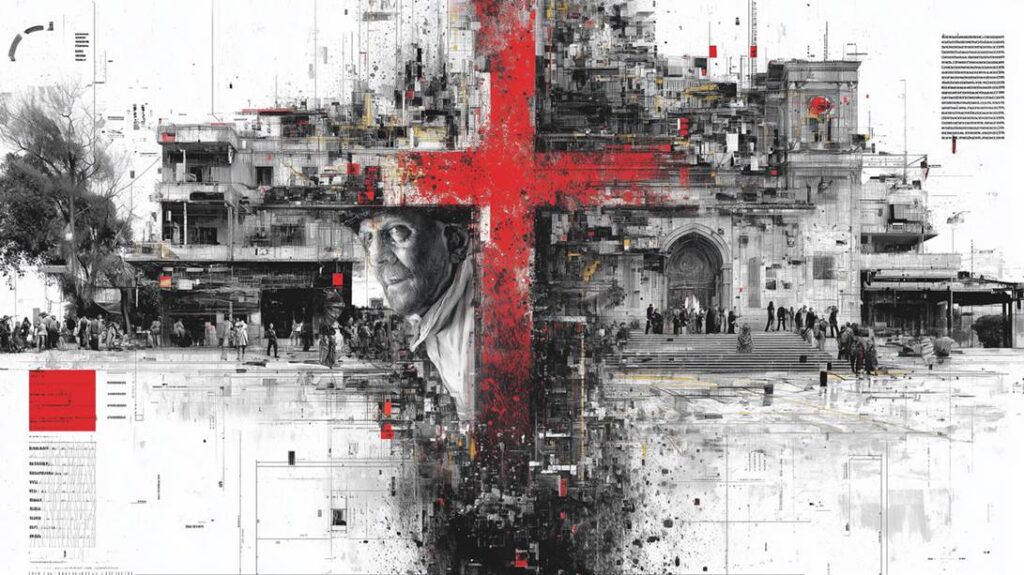
Diaspora and international alarm
Armenian communities abroad have reacted with concern. On October 15, 2025 the primates of the Armenian Church dioceses in North America issued a public statement “expressing profound concern” over the recent clergy arrests. They stressed that the detained priests were known for their piety and service, and warned that punishing them “threatens the moral and spiritual fabric of our nation”. These hierarchs explicitly urged Armenian authorities to respect the Church’s historic independence and due process for the accused. Similarly, in July 2025 a coalition of U.S.-based religious freedom organizations – including the Knights of Vartan and Foundation for Defense of Democracy – “categorically denounced” Pashinyan’s “relentless, politically motivated assaults” on the Church and faithful. The largest Diaspora party, the Armenian Revolutionary Federation (Dashnaktsutyun), warned that these events “mark a dangerous new chapter in Armenia’s descent into authoritarian rule”. Even voices typically closer to Pashinyan have fretted about the implications: civic activists point out that bishops calling for the prime minister’s resignation was a warning ignored at the nation’s peril, and they urge cooling down the confrontation in deference to national unity.
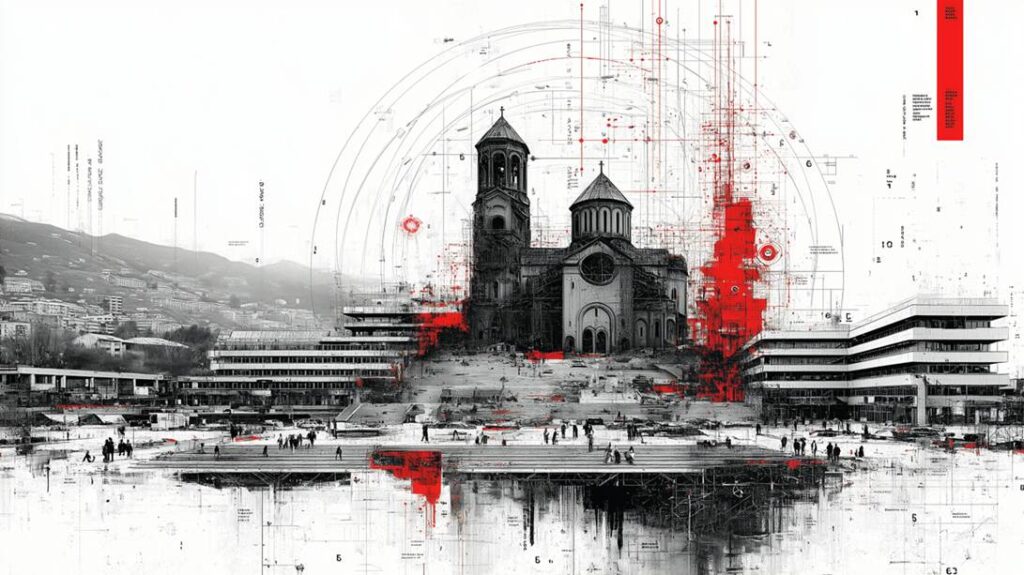
With parliamentary elections looming in mid-2026, many see the church clashes as intertwined with Pashinyan’s political survival strategy. Even a Reuters report on the October 2025 detentions noted that they came amid pressure on Pashinyan to deliver a peace deal with Azerbaijan. By targeting a moral authority like the Apostolic Church – which symbolically binds the nation – the government is seeking to pre-empt any rallying cry against it. One US columnist went so far as to say “this is not an isolated incident” but part of a wider international game: he claimed U.S. policy (under the Biden administration) had favored Pashinyan despite concerns, framing the Church-state clash as a proxy in global power politics. Such views reflect how diaspora pundits are weaving these events into globalist agendas undermining traditional values.
Politics, justice and the future of faith
At its core, this crisis has raised fundamental questions: will Armenia respect the constitutional role of its Church as guardian of national identity, or will political expediency allow its institutions to be co-opted and weakened? Legal experts warn that many of the cases hinge on hearsay evidence and informal leaks. By constitutional mandate (Article 18) the Armenian Church is protected from state interference, but the grey area of “public order” and campaign laws is being pushed to justify these crackdowns. Two senior bishops remain jailed on highly politicized charges, and multiple parish priests have received pre-trial detention orders on similar grounds.

For Armenians at home, the crackdown has stirred fear and defiance. Many traditionalists point to slogans like “God, faith and homeland” on the Republic Square memorial as symbols now under threat. Diaspora members worry that if the state prevails in splitting the Church, it could sever the spiritual tie that has historically united Armenians globally. In Pashinyan’s camp, the official narrative is that the Church must be held accountable if it oversteps into politics. But for critics, the much graver offense is the apparent violation of democratic norms: the Weaponization of justice, the intimidation of independent voices, and the dismantling of institutional checks. Indeed, Etchmiadzin has warned that criminals – not just criminals, but whole communities – might suffer if spiritual service is criminalized.
Outlook
As 2025 draws to a close, Armenia’s political landscape is in flux. Many opposition figures and Church loyalists fear that unless the government backs off, the country will slide further toward authoritarianism. The police surveillance, wiretaps, and lawyers’ offices now encircling a church diocese suggest a state apparatus willing to crush anything that contradicts its will.
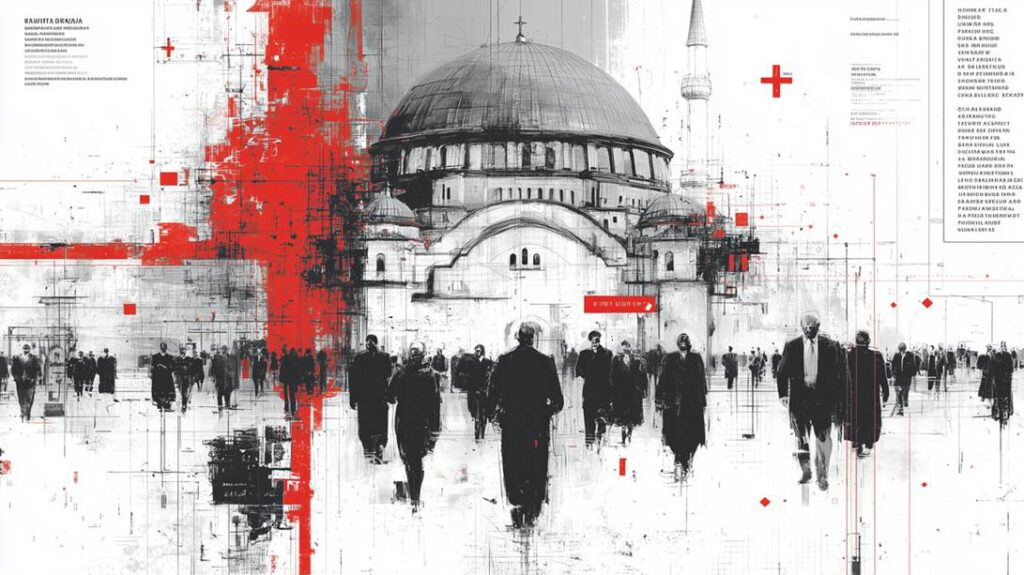
What remains clear is that 2025 has seen Pashinyan transform his long-simmering feud into an outright church–state confrontation. If victims of this struggle include the principles of free worship and rule of law, the shadow it casts over Armenia’s future may be long indeed. Armenia’s peace and identity ultimately depend on allowing the Church to fulfill its sacred mission without fear. Whether those pleas will be heeded is the defining question as the nation heads toward its next elections.


